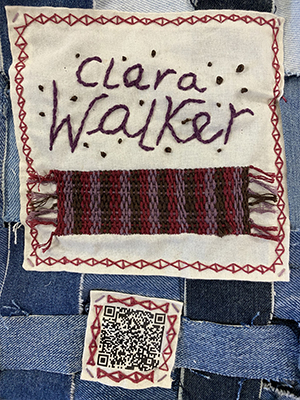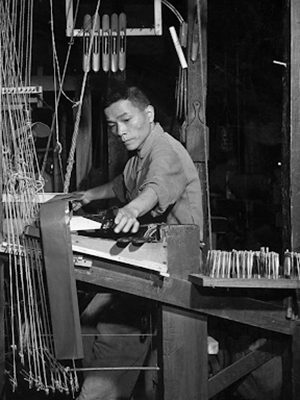Clara Walker
“I was born right here in Arkansas. My mother was a slave before me. She came over from the old country. She was a-runnin along one day…and a man come along on an elephant and scoop her up and put her on a ship. When I was 13 years old my old mistress put me with a doctor who learned me how to be a midwife. That was because so many women on the plantation was catching babies.I stayed with that doctor, Dr. Mc Gill his name was, for 5 years. I got to be good. Got so he’d sit down and I'd do all the work. When I come home, I made a lot of money for old miss. Lots of times, didn’t sleep regular or get my meals on time for three or four days. And I didn't have to work in the fields. In between times I cooked and I would jump in the loom. Did my yards every day, I weave cloth for dresses. Fine dresses you would use thread as thin as that you sews with today. I weave cloth for underclothes, and for handkerchiefs and for towels. Then I weave nits and lice. It was kind of coarse cloth used for clothes like overalls. It was sort of speckeldy all over. That's why they called it nits and lice.” – Clara Walker
 A.J. Pesaro ’24
A.J. Pesaro ’24
The beautiful and complex designs woven into expensive silk fabric were painstaking to produce. In the 1700’s Weavers used children called drawboys to draw up the proper threads at the top of giant looms to create the correct pattern. Working long hours, they became tired and would often make mistakes, ruining weeks worth of labor. By 1800, one of these former drawboys named Joseph Jacquard took the idea of an automated punch-card organ and applied it to the thread selection, quickly making French drawboys obsolete. In response, workers rioted. They threw their wooden clogs (sabot) into the machinery in protest (where we get the word “saboteur”). By 1847 English engineers were using this same punch card technique to align the rivets of the giant iron ships that carried millions of immigrants to America. Overwhelmed with the influx of new people, US Census statistician Herman Hollerith used Jacquard’s loom cards to invent the first automated counting machine. He saved over half a million dollars and the 1890 census was completed twice as fast as the previous one. He then went on to perfect his invention (and binary coding) to form the Tabulating Machine Company, which is now known today as IBM. The color PC monitor (that you might be using right now) was created by African American inventor Mark Dean. He also led the IBM team that created the first gigahertz chip and co-created a system to allow peripheral devices like monitors and printers to plug directly into computers.
Sources
- Federal Writers' Project: Slave Narrative Project, Vol. 2, Arkansas, Part 7, Vaden-Young. 1936.
- Connections by James Burke, 1978 MacMillan
- 11 Famous Black Inventors Who Changed Your Life
